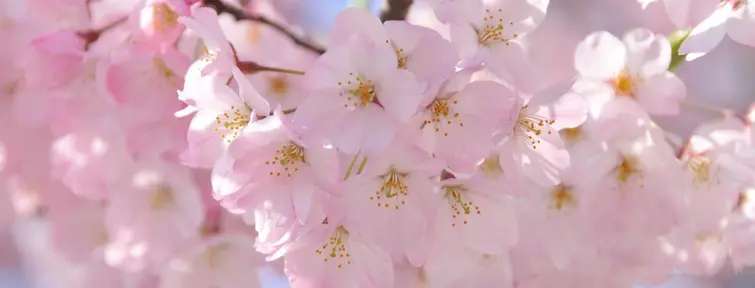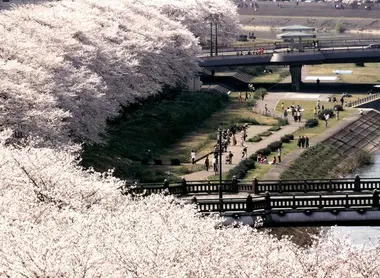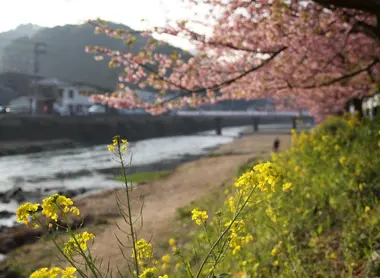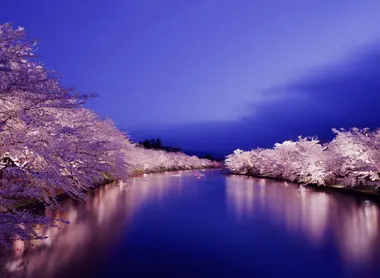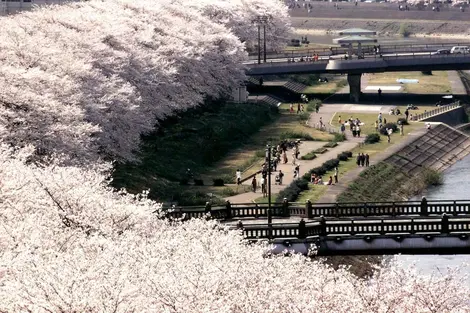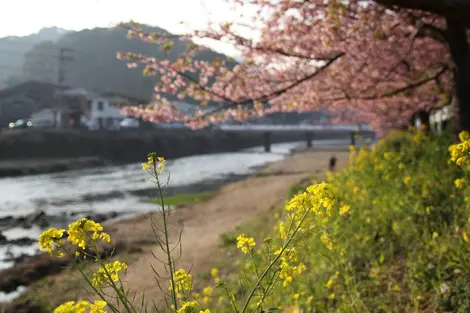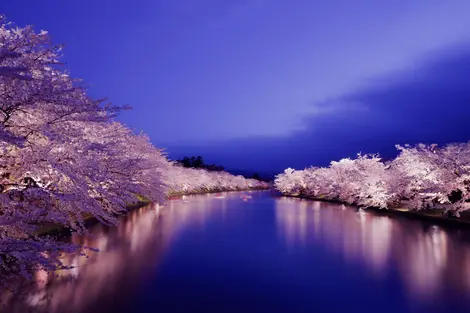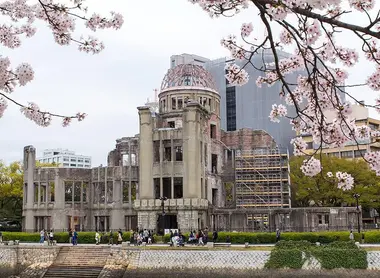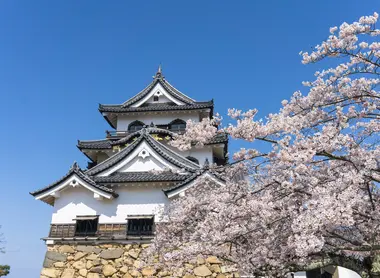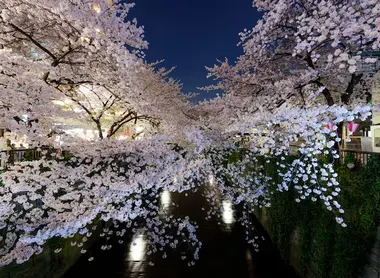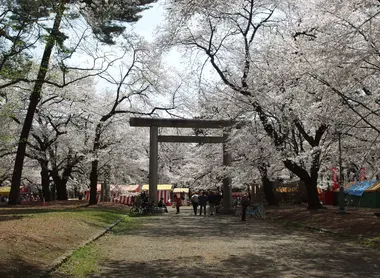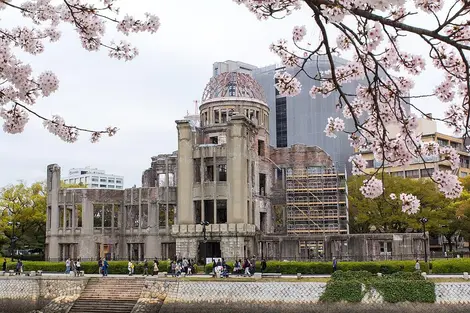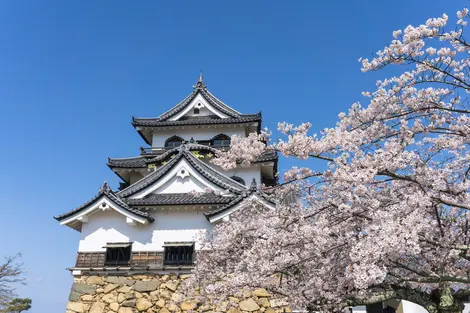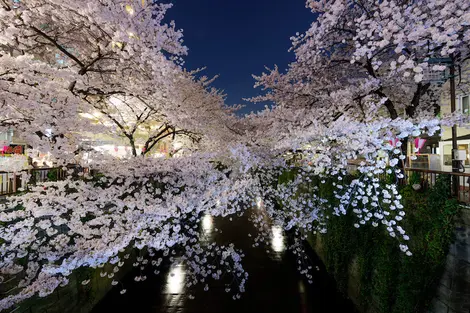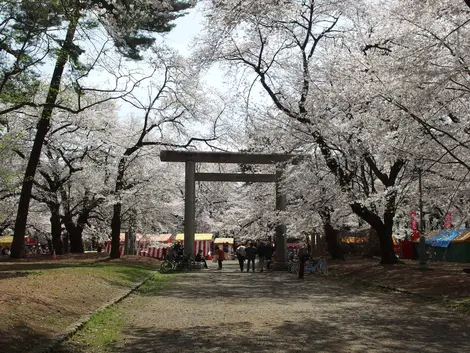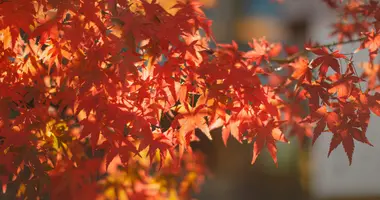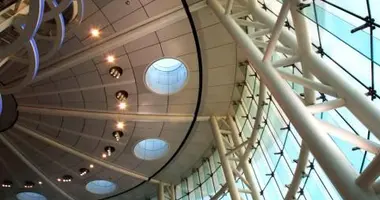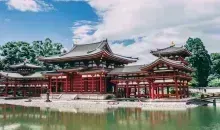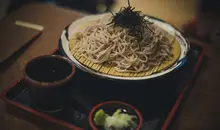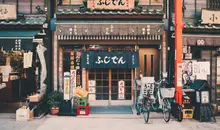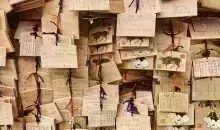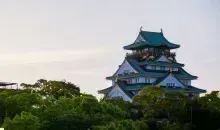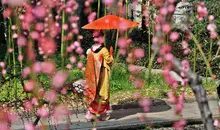When to go to Japan to see the cherry blossoms?
- Published on : 08/02/2023
- by : I.D.O.
- Youtube
Where and when to see cherry blossoms in Japan?
The cherry blossom in Japan, known as sakura (桜), is a spectacular natural event that attracts thousands of visitors every year. This magical period generally runs from mid-March to early May, progressing from the south to the north of the Japanese archipelago. The phenomenon is so important to Japanese culture that the national meteorological agency publishes detailed forecasts, enabling locals and tourists alike to plan their visits. To take full advantage of this ephemeral spectacle, it's essential to understand the flowering calendar and choose your destination wisely, depending on the time of year you travel.
Cherry blossom calendar by region in Japan
With Japan stretching over 3,000 km from north to south, cherry blossom follows a geographical progression known as sakura zensen, literally "the advance of the cherry blossom front". This progression begins in the warmer southern regions and gradually moves northwards. Here's a detailed timetable by region, based on statistics for the last ten years:
In southern Japan, the first blossoms appear at the end of March:
- Kagoshima (Kyushu): late March/early April (March 24 for hatching, April 5 for full flowering in 2025)
- Nagasaki (Kyushu): late March/early April
- Fukuoka (Kyushu): late March (March 25 for hatching, March 28 for full flowering in 2025)
In the Shikoku and Chugoku region :
- Takamatsu (Shikoku): late March/early April
- Matsuyama (Shikoku): late March/early April
- Hiroshima: late March/early April (March 29 for hatching, April 7 for full bloom in 2025)
In the Kansai region (central Japan):
- Kyoto: late March/early April (March 30 for hatching, April 7 for full flowering in 2025)
- Osaka: late March/early April (March 30 for hatching, April 6 for full flowering in 2025)
- Nara: early April
In the Chubu and Kanto regions:
- Shizuoka: late March
- Nagoya: late March/early April (March 26 for hatching, April 4 for full flowering in 2025)
- Takayama: mid-April
- Kanazawa: mid-April (March 29 for hatching, April 6 for full flowering in 2025)
- Tokyo: late March/early April (March 24 for hatching, March 30 for full flowering in 2025)
In northern Japan, flowering is later:
- Sendai: mid-April (April 4 for hatching, April 8 for full flowering in 2025)
- Niigata: mid-April (April 3 for hatching in 2025)
- Aomori: late April/early May (April 19 for hatching, April 23 for full flowering in 2025)
- Sapporo(Hokkaido): early May (April 25 for hatching, April 28 for full flowering in 2025)
The best times to see sakura in Tokyo and central Japan
Tokyo and its environs are often the focal point of a trip to Japan, and the capital offers many exceptional sites for admiring the cherry blossoms. The ideal time to see sakura trees in Tokyo is generally between late March and early April, with peak blooming usually lasting between 5 and 7 days.
For the year 2025, forecasts predict a blooming period around March 24 and full bloom around March 30. It's important to note that these dates may vary according to weather conditions. Higher-than-normal temperatures can speed up flowering, while colder weather can delay it.
Here are some of the best places to admire cherry trees in Tokyo:
- Ueno Park, with its central avenue lined with cherry trees, attracts huge crowds during the hanami period
- The moat of the Imperial Palace, notably Chidorigafuchi Road, offers a fairy-tale spectacle with night-time illuminations
- The Shinjuku Gyoen garden, with its 1,500 cherry trees of different varieties, offers a longer viewing period
- The banks of the Meguro River, where some 800 cherry trees form an arch over the water
In central Japan, Kyoto offers a unique experience with its cherry blossoms, which generally bloom between late March and mid-April. The combination of historic temples and cherry blossoms creates a landscape of incomparable beauty. Maruyama Park, the Philosopher's Walk and the gardens of Kiyomizu-dera temple are particularly recommended.
Exploring Japan from north to south: the ideal itinerary for following the blossoms
For travelers wishing to maximize their chances of seeing the cherry blossoms, an itinerary following the progression of the blossoms from south to north is ideal. Travelling freely with a Japan Rail Pass and going cherry blossom hunting is an excellent option for this type of tour.
Here's an example of a three-week itinerary that follows the "blossom front":
- First week (late March): start in southern Japan, visiting Fukuoka and Kagoshima on the island of Kyushu
- Second week (early April): head up to central Japan to explore Hiroshima, Kyoto, Osaka and Nara
- Third week (mid-April): complete your trip in and around Tokyo, then head north weather permitting
For those with more time to spare, extend your trip to Sendai and even Sapporo in May, to take advantage of the late blooming season in the north of the country. This geographical progression offers a unique opportunity to observe this natural phenomenon over a longer period than by staying in one place.
It's important to note that flowering also varies according to altitude. In mountainous areas such as Takayama or around Mount Fuji, cherry blossoms generally come into bloom later than in low-lying towns in the same region.
Japan's must-see cherry blossom festivals
Japan celebrates cherry blossom with numerous festivals that add a cultural dimension to this natural experience. These events, often accompanied by night-time illuminations, food stalls and traditional performances, allow the hanami tradition to be experienced to the full.
Among the most renowned festivals are :
- The Nakameguro Cherry Blossom Festival in Tokyo (late March): the banks of the Meguro canal are illuminated in the evening, creating a romantic atmosphere
- Tokyo's Chiyoda Sakura Festival (late March to late April): 230 cherry trees are illuminated along the moat of the Imperial Palace
- The Ueno Sakura Matsuri Festival in Tokyo (mid-March to early April): one of the most popular, with over 1,000 cherry trees
- The Miyako Odori Festival in Kyoto (April): traditional dance performances by geishas celebrate the arrival of spring
- Hirosaki Festival in Aomori prefecture (late April to early May): takes place around a historic castle surrounded by 2,600 cherry trees
These festivals are often very crowded, so it's advisable to arrive early to find a good seat. Some popular sites, such as Hirosaki Castle Park or Maruyama Park in Kyoto, can be particularly crowded on weekends and public holidays.
Planning your trip: forecasts, reservations and practical advice
As the cherry blossom season is one of Japan's most popular tourist seasons, careful planning is essential. Here are a few practical tips to optimize your trip:
1. Follow the blossom forecast
- The Japan Meteorological Agency (JMA) publishes blossom forecasts as early as January
- These forecasts are updated regularly as the season approaches
- Several websites and applications allow you to follow the blossoming in real time
2. Book in advance
- Accommodation may be fully booked several months in advance, especially in Kyoto and Tokyo
- We recommend that you book your accommodation at least 6 months in advance of your trip
- Transportation, especially trains and domestic flights, should also be booked as early as possible
3. Be flexible
- As nature is unpredictable, exact flowering dates may vary
- Allow a few days before and after the expected dates of full bloom
- Consider visiting several sites to maximize your chances
4. Prepare for crowds
- Popular sites can be extremely crowded, especially at weekends
- Visiting early in the morning or in the evening may offer a more pleasant experience
- Some lesser-known sites can be just as enjoyable with fewer people
For the best experience, we recommend combining popular sites with less crowded areas. For example, in Tokyo, after visiting Ueno Park, you could explore Rikugien Garden or Inokashira Park for a more peaceful atmosphere.
The hanami experience: cherry blossom traditions and activities
Hanami (花見), literally "looking at the blossoms", is much more than simply observing cherry blossoms. It's a cultural tradition deeply rooted in Japanese society, dating back centuries. Here's what you need to know to fully enjoy the experience:
The origins of hanami date back to the Nara era (710-794), but it was during the Heian period (794-1185) that the admiration of Japanese cherry trees gained in popularity. In the spring of 812, the Japanese emperor Saga organized the first festival dedicated to cherry blossom viewing at Kyoto's Kyomizu temple, marking the birth of the first Hanami festival. From 831 onwards, this tradition became an annual event at the imperial court, before gradually spreading to all levels of society.
Today, cherry blossoms in Japan and hanami are celebrated mainly as picnics under the blossoming trees. Here are some important aspects of this tradition:
- The hanami picnic: the Japanese often reserve their spot early in the morning by spreading a blue tarpaulin under the cherry trees
- Food and drink: special bentos, sake and beer are shared among friends and colleagues
- Yozakura (夜桜): night-time viewing of the illuminated cherry trees is a particularly magical experience
- Photography: capturing the ephemeral beauty of flowers is an important aspect of modern hanami
For foreign visitors, taking part in a hanami is an excellent way to immerse yourself in Japanese culture. Don't hesitate to buy a few specialties in the local konbini (mini-markets) and take a seat in a park to observe not only the flowers, but also the locals celebrating this tradition.
Special activities such as Tokyo Under the Cherry Blossoms or Other Tokyo Activities also allow you to discover this tradition from a more guided angle.
Beyond cherry blossoms: other seasonal blooms to discover in Japan
If you can't visit Japan during the cherry blossom season, or if you'd like to discover the country's other botanical wonders, the archipelago offers spectacular blooms all year round.
For those traveling before the cherry blossom season:
- Plum blossoms (ume): bloom from February to early March, notably at the Kairakuen garden in Ibaraki
- Peach trees: early March, particularly beautiful in Toyota, Aichi prefecture
For those traveling after the cherry season:
- Glycines: late April to early May, especially at Kawachi Fujien in Fukuoka
- Azaleas: April to May, magnificent in Kirishima-Yaku National Park
- Peonies: April to May, particularly impressive in Tokyo's Ueno Toshogu garden
- Iris: June, notably at the Horikiri iris garden in Tokyo
- Hydrangeas (ajisai): June to July, splendid at the Meigetsuin temple in Kamakura
- Lavender: July, especially at the Tomita farm in Hokkaido
There's also a variety of cherry that blooms outside the main season: jugatsu-zakura (literally "October cherry"), which blooms from October to January in the Tokyo area. On the Okinawa islands, the Kanhizakura variety blooms from February onwards, a deep pink with bell-shaped petals.
These alternatives can offer experiences just as memorable as traditional cherry orchards, often with fewer crowds. What's more, the varieties of cherry trees in Japan are numerous (over 100 recorded) and may blossom at slightly different times, extending the possible viewing period.
In conclusion, although the cherry blossom period in Japan is relatively short for each region (around two weeks from bud burst to blossom fall), the geographical progression of this phenomenon from south to north means that flexible travellers can observe it over a longer period. The unique experience of hanami, combining natural beauty and cultural tradition, makes this one of the most magical seasons to discover Japan. With the right planning and perhaps a little meteorological luck, you can experience this ephemeral spectacle that so aptly symbolizes the Japanese philosophy of appreciating life's transient beauty.
